As global tourism continues to expand, the environmental impact of our adventures becomes increasingly significant. Sustainable travel isn’t just a trend—it’s a necessary shift in how we explore our planet. This comprehensive guide offers practical eco-friendly travel tips and sustainable travel gear recommendations to help you minimize your environmental footprint while maximizing your positive impact on local communities and ecosystems.
What is Sustainable Travel?
Sustainable travel goes beyond simply reducing your carbon footprint. It encompasses a holistic approach that balances environmental conservation, cultural respect, and economic support for local communities. The goal is to ensure that your travel experiences can be enjoyed by future generations while preserving the natural and cultural heritage of destinations.
According to research by Booking.com, over 76% of travelers express a desire to travel more sustainably, yet many don’t know where to begin. This growing awareness represents a positive shift in traveler mindset, but turning intention into action requires practical knowledge and tools.
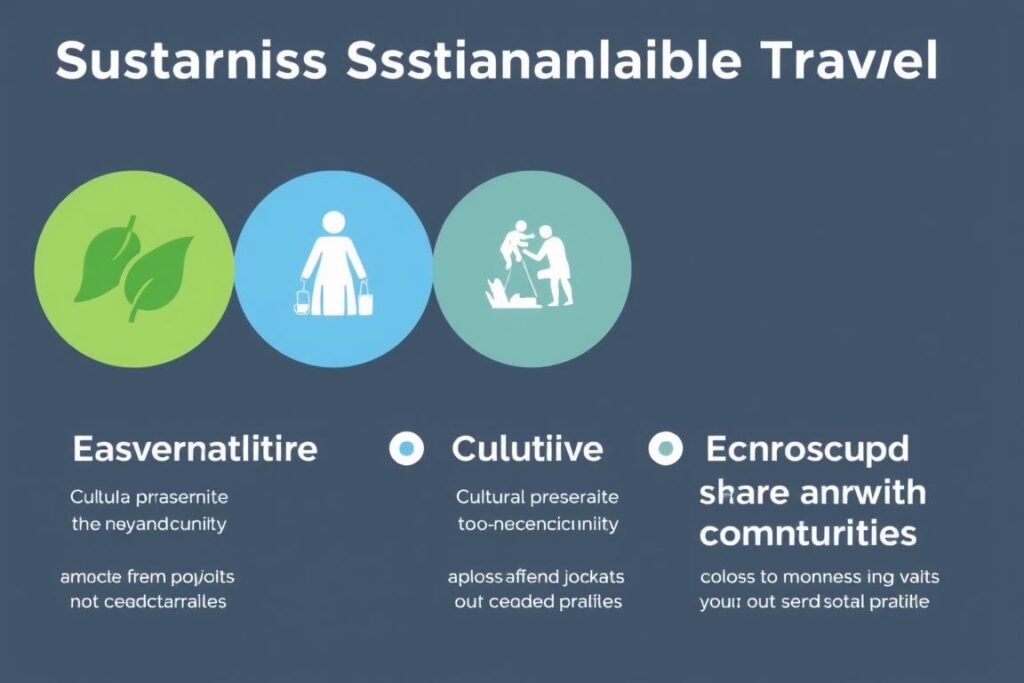
Eco-Friendly Transportation Tips
Transportation accounts for approximately 20% of tourism’s global carbon footprint, with air travel being the largest contributor. Making mindful choices about how you get to and around your destination can significantly reduce your environmental impact.
Choose Low-Impact Transportation Options
When possible, opt for more efficient modes of transportation. Trains emit 66-75% less carbon than other forms of travel, making them one of the most eco-friendly options aside from walking or cycling. For shorter distances within your destination, consider public transportation, walking, or renting bicycles to explore.
Minimize Air Travel Impact
If flying is unavoidable, book direct flights whenever possible. As much as 50% of a plane’s carbon emissions come from takeoff and landing, making non-stop flights significantly more efficient than those with layovers. Consider airlines that invest in biofuel technology, which can reduce carbon emissions by up to 80% compared to fossil fuels.
Carbon Offset Your Journey
While reducing emissions should be your first priority, carbon offsetting allows you to compensate for unavoidable emissions by investing in environmental projects. Use a carbon calculator to determine your trip’s footprint, then purchase offsets through reputable providers that fund renewable energy, reforestation, or conservation projects.
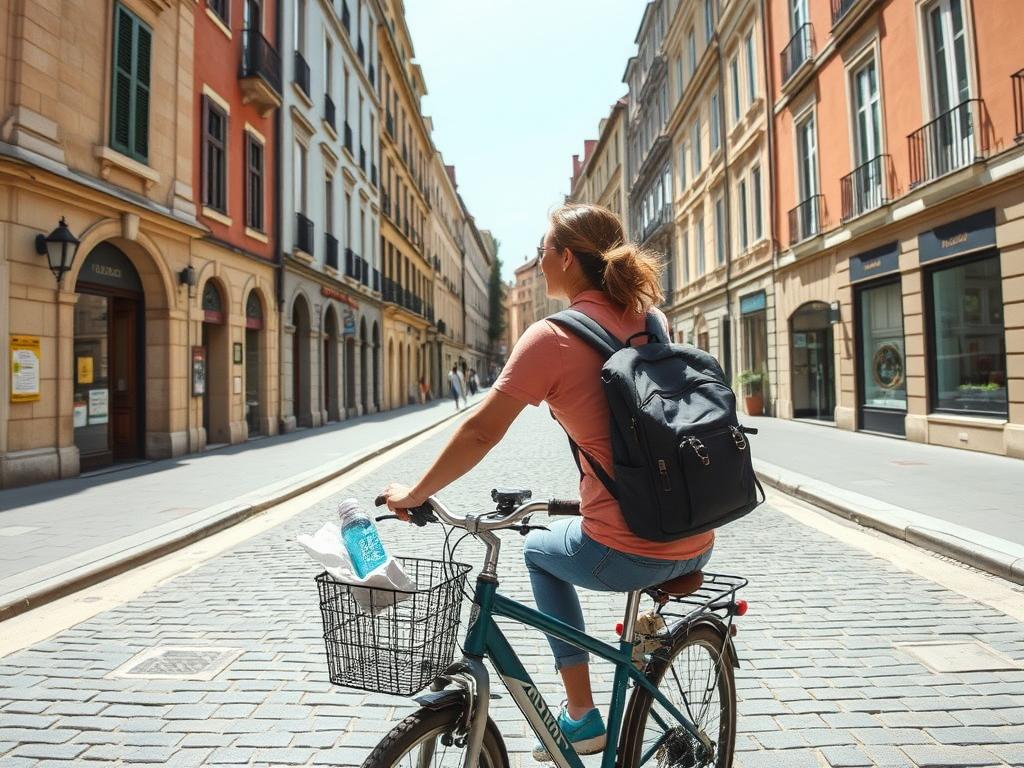
Sustainable Accommodation Choices
Tourist accommodations account for approximately 1% of global emissions and 20% of emissions from the tourism industry. Your choice of where to stay can make a significant difference in your overall travel footprint.
Research Eco-Certified Properties
Look for accommodations with legitimate sustainability certifications like Green Globe, EarthCheck, or those approved by the Global Sustainable Tourism Council (GSTC). These properties implement comprehensive sustainability practices beyond simple greenwashing efforts.
Support Local and Small-Scale Lodging
Choose locally-owned guesthouses, homestays, or smaller hotels over international chains when possible. This ensures more of your money stays in the local economy while often providing a more authentic cultural experience.
Practice Energy and Water Conservation
Even in the most eco-friendly accommodations, your personal habits matter. Turn off lights and electronics when not in use, take shorter showers, reuse towels, and adjust the thermostat to minimize energy consumption. These small actions collectively make a significant impact, especially in regions facing water scarcity or energy challenges.

Essential Sustainable Travel Gear
The right equipment can significantly reduce waste and environmental impact during your travels. Investing in quality, sustainable travel gear not only benefits the planet but often provides better long-term value than disposable alternatives.
Eco-Friendly Bamboo Toothbrushes
Conventional plastic toothbrushes contribute millions of tons of non-biodegradable waste to landfills each year. Bamboo toothbrushes offer a sustainable alternative that decomposes naturally at the end of their lifecycle. These durable brushes feature biodegradable bamboo handles with soft bristles that are gentle on your gums while being tough on plaque.

Reusable Water Bottles
Single-use plastic water bottles are one of the most common waste items produced by travelers. A high-quality reusable water bottle eliminates this waste while keeping you hydrated. Stainless steel bottles offer excellent durability and insulation, keeping drinks cold for up to 24 hours or hot for up to 12 hours. Glass bottles provide a pure taste experience without chemical leaching, though they’re slightly heavier and more fragile for travel.
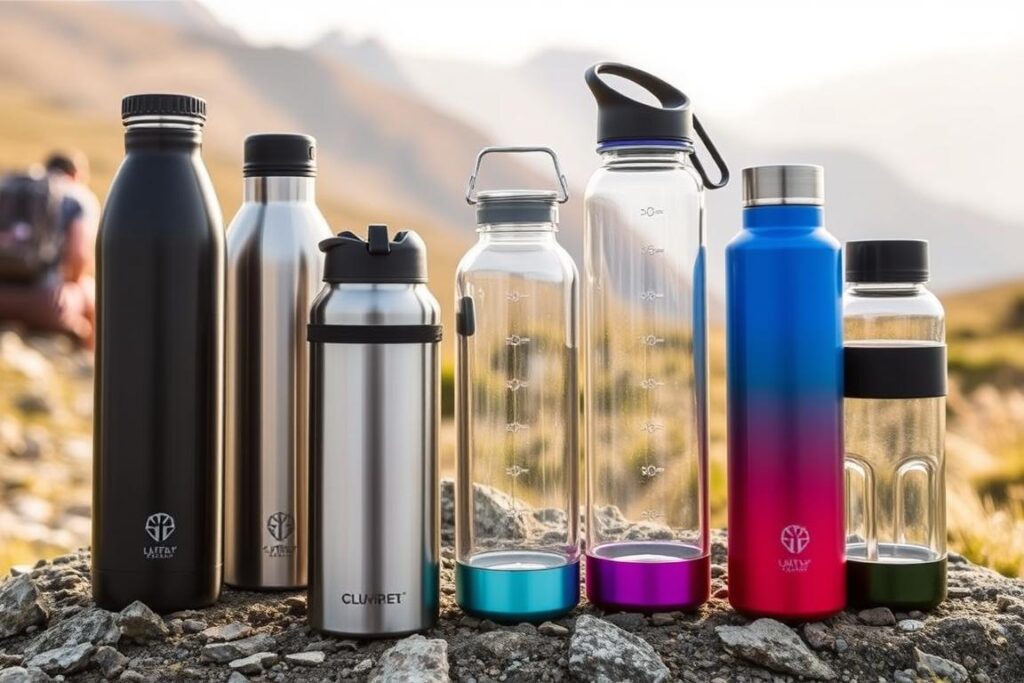
Eco-Friendly Travel Hygiene Kits
Traditional travel toiletries generate significant plastic waste through small bottles and packaging. Eco-friendly hygiene kits feature plastic-free alternatives like solid shampoo bars, conditioner bars, and toothpaste tablets that eliminate the need for plastic containers. These concentrated products also last longer than their liquid counterparts, saving space in your luggage while reducing your environmental impact.
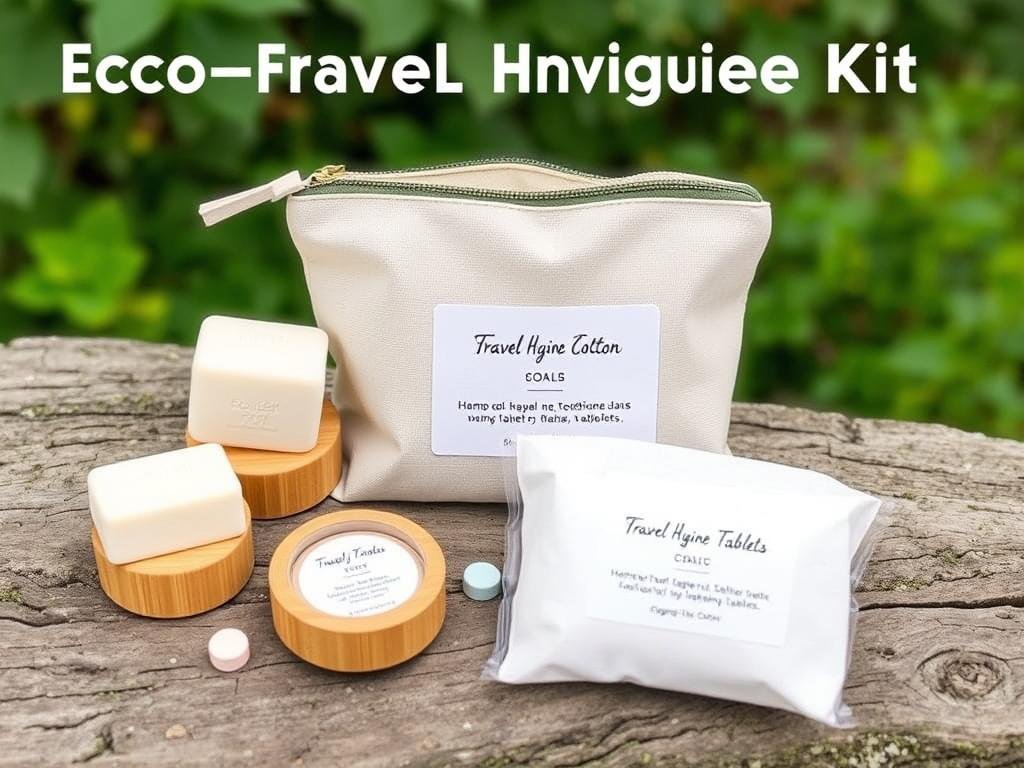
Recycled Travel Backpacks
Sustainable backpacks made from recycled materials offer durability while giving new life to materials that would otherwise end up in landfills. These packs are often constructed from recycled plastic bottles, fishing nets, or industrial waste. Despite their eco-friendly origins, they don’t compromise on quality or features, offering the same functionality as conventional backpacks with a significantly reduced environmental footprint.
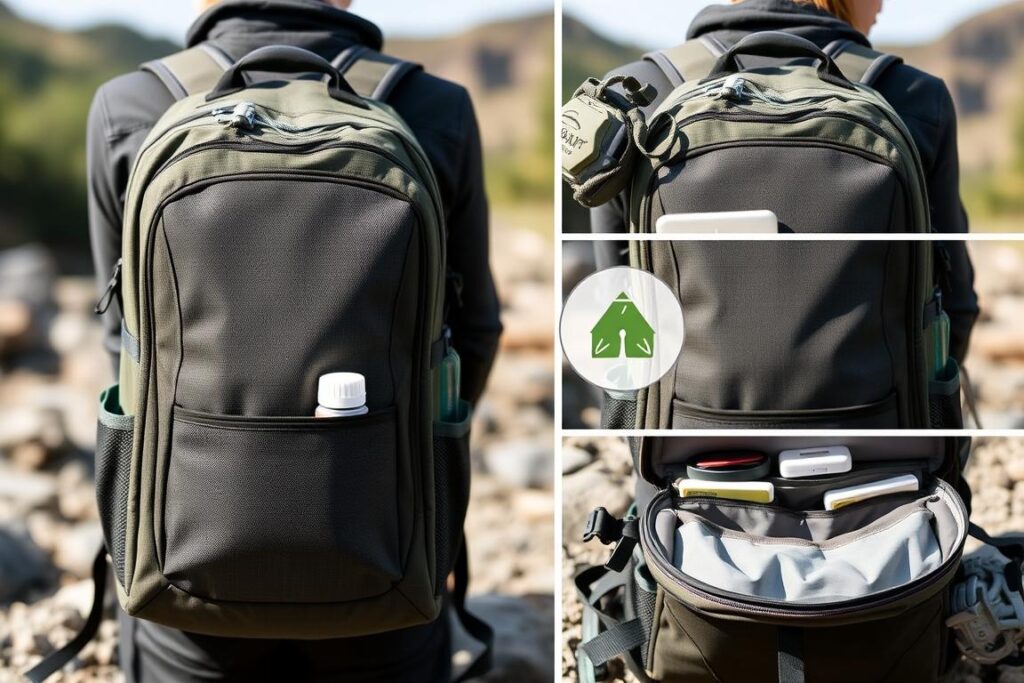
Waste Reduction Strategies
Every year, approximately 8 million metric tons of plastic end up in our oceans—equivalent to dumping a garbage truck of plastic into the ocean every minute. Travelers can play a significant role in reducing this waste through mindful consumption and proper disposal practices.
Avoid Single-Use Plastics
Single-use plastics like straws, utensils, and bags are among the most common waste items found in natural environments. Pack reusable alternatives such as metal straws, bamboo utensils, and cloth shopping bags to avoid contributing to this problem. These items take up minimal space in your luggage but make a substantial environmental difference.
Choose Plastic-Free Food Options
When dining out, opt for eat-in experiences rather than takeaway, which typically comes with disposable packaging. At street food vendors, look for those using biodegradable containers or consider bringing your own reusable container. Fresh, local foods generally require less packaging than imported or processed options.
Dispose of Waste Responsibly
Learn about local recycling and waste management systems at your destination. Some regions have different sorting requirements or limited recycling capabilities. When hiking or visiting natural areas, always follow the Leave No Trace principles by packing out all trash and leaving places as you found them.

Supporting Local Communities
Sustainable travel extends beyond environmental considerations to include positive social and economic impacts on the communities you visit. Tourism leakage—where up to 90% of travel spending leaves the local economy—is a significant challenge that conscious travelers can help address.
Shop and Eat Locally
Support local businesses by choosing locally-owned restaurants, shops, and services. Look for establishments that source ingredients and materials locally, creating a multiplier effect that benefits the broader community. This approach not only keeps money in the local economy but often provides more authentic experiences.
Hire Local Guides
Local guides offer invaluable insights into their communities while benefiting directly from tourism. They can provide access to lesser-known attractions and cultural contexts that enhance your understanding of a destination. When booking tours or experiences, prioritize operators that employ local people in meaningful roles.
Respect Cultural Norms
Research local customs, traditions, and etiquette before your trip. Learning a few phrases in the local language, dressing appropriately, and observing local protocols shows respect for the communities you visit. This cultural awareness helps prevent unintentional offense and fosters positive interactions.

Embracing Slow Travel
The “hit-and-run” style of tourism—rushing between multiple destinations to check items off a bucket list—often results in higher emissions, more stress, and superficial experiences. Slow travel offers a more sustainable and fulfilling alternative.
Stay Longer in Fewer Places
Rather than taking multiple short trips throughout the year, consider consolidating your travel into fewer, longer journeys. This reduces the carbon emissions associated with transportation while allowing for deeper connections with destinations. When you do travel, focus on exploring one region thoroughly rather than hopping between distant locations.
Immerse Yourself in Local Life
Slow travel creates opportunities to experience destinations more authentically. Shop at local markets, take cooking classes to learn about regional cuisine, or participate in community events. These experiences provide richer memories than simply photographing famous landmarks.
Travel Off the Beaten Path
Overtourism—where popular destinations become overwhelmed by visitors—damages environments and diminishes experiences. By exploring lesser-known locations, you can avoid contributing to this problem while discovering unique places that aren’t featured in typical travel guides. This approach also helps distribute tourism benefits to communities that might otherwise be overlooked.

Contributing to Nature Conservation
Protected areas like national parks and marine reserves play a crucial role in preserving biodiversity and natural resources. Tourism can either support or undermine these conservation efforts, depending on how it’s conducted.
Visit Protected Areas Responsibly
National parks and conservation areas often rely on visitor fees to fund their protection efforts. By visiting these sites and paying entrance fees, you contribute directly to their preservation. However, it’s essential to follow all visitor guidelines, stay on designated paths, and avoid disturbing wildlife or removing natural materials.
Choose Ethical Wildlife Experiences
Avoid attractions that exploit animals for entertainment or allow unnatural interactions with wildlife. Instead, support legitimate conservation programs and responsible wildlife viewing opportunities that maintain appropriate distances and respect natural behaviors. Research operators thoroughly to ensure they prioritize animal welfare over profit.
Participate in Conservation Activities
Many destinations offer opportunities to participate directly in conservation efforts, from beach cleanups to reforestation projects. These activities provide meaningful ways to give back to the places you visit while learning about local environmental challenges and solutions.
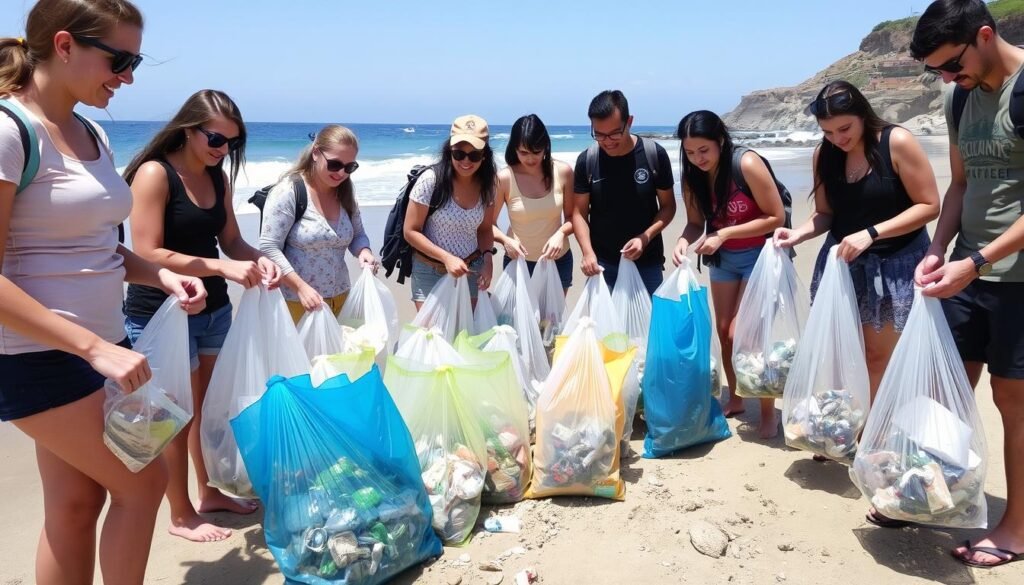
Future Trends in Sustainable Travel
The sustainable travel landscape continues to evolve with technological innovations and shifting consumer preferences. Staying informed about these developments can help you make increasingly eco-friendly choices in the future.
Electric Transportation Options
The expansion of electric vehicle infrastructure is making eco-friendly road trips more accessible. Electric rental cars, e-bikes, and even electric RVs are becoming available in more destinations, offering lower-emission alternatives to traditional transportation options. Some tour operators now offer carbon-neutral excursions using electric vehicles powered by renewable energy.
Regenerative Travel
Beyond simply reducing negative impacts, regenerative travel aims to leave destinations better than they were found. This emerging approach focuses on actively improving environmental conditions and community well-being through tourism. Look for experiences that incorporate habitat restoration, community development, or other positive interventions as part of their offerings.
Technology-Enabled Sustainability
New apps and platforms are making sustainable choices more accessible to travelers. From tools that calculate and offset carbon emissions to platforms connecting travelers with verified eco-friendly accommodations and experiences, technology is removing barriers to responsible travel decisions. Solar-powered travel gear is also becoming more efficient and affordable, reducing reliance on grid electricity.

Your Journey Toward More Sustainable Travel
Sustainable travel isn’t about perfection—it’s about making incrementally better choices that collectively create significant positive impact. By implementing even a few of the eco-friendly travel tips from this guide, you’ll be contributing to a more sustainable tourism industry and helping preserve the places we love to visit.
Remember that sustainable travel is a journey rather than a destination. Each trip presents new opportunities to refine your approach and discover innovative ways to minimize your environmental footprint while maximizing your positive contributions to local communities and ecosystems.
Shop Our Curated Eco-Travel Essentials
Ready to upgrade your travel gear with sustainable alternatives? Our carefully selected eco-friendly travel products help you reduce waste and travel more responsibly without sacrificing quality or convenience.




